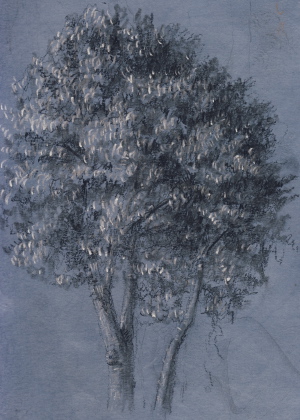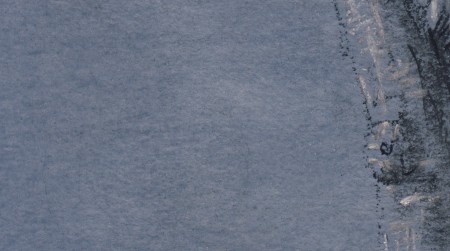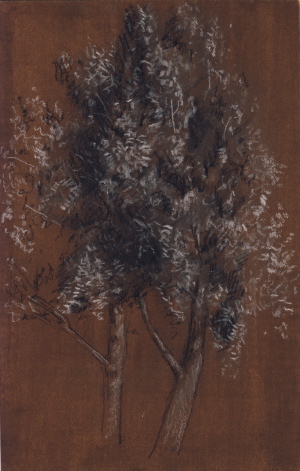
Painting From Life vs. From Photos

Tinting paper is the fastest and least expensive ways to ‘make’ paper. One begins with a ready-made sheet, but then makes it one’s own.

A tinted sheet is interesting to look at because the tint is never perfectly even. Each sheet is a simple painting in its own right, before it is used for drawing.

By changing a white sheet into a brown or blue one, it becomes possible to draw or paint with both white and black, to develop both lights and shadows, and let the paper act as the middle tone.

I made these tinted papers using a paint made from hide glue and pigment: chalk for white, plus earth pigments and black, or natural indigo. The chalk gives the tint some opacity. I applied the tint in two or more thin layers to make it even. The paper is fairly smooth watercolor paper. In the close-up details you can see how the tint interacts with the texture of the paper, making a bit of sparkle. Any water based paint could be used for tinting.

Karl,
Thanks for posting this. The examples are really nice to see close up. As you know, I’ve been planning to try printing photographs on hand-tinted paper. Your lovely trees are similar to the Sourdough Trail series I will start with. I think the sparkle effect will work well with bark and foliage. My main concern is that my printer has only dark inks, no white, so the overall tint needs to be quite light or the highlights will suffer.
Karl:
Darn if I can think of the name. I’m trying to come up with the German fellow from around the Renaissance who drew trees like that. He is considered one of the founders of landscape as a medium. Not Goethe.
Steve,
Don’t you think that it will be possible to shift the brightness of the pictures in AP or recalibrate the printer to compensate for the color of the paper?
Birgit,
I could adjust digital scans of the prints on tinted paper for display on a monitor, but on the physical print itself I have no way of increasing the light reflectivity of a printed region. If I had white pigment I could print with that to brighten the region, but all my normal pigments (for monochrome printing) only serve to darken to vearying degrees.
If I had white pigment I could print with that to brighten the region, but all my normal pigments (for monochrome printing) only serve to darken to vearying degrees.
You could do this by screenprinting the light areas onto your digital prints.
David,
That’s beginning to sound like work! I can imagine, once I develop a technique, tinting a large number of sheets of paper quickly, and later printing on them in the usual, painless way. But creating screens and doing overprinting on each print seems much more time-consuming. I’m hoping a white ink becomes available for my printer before too long…
I’m hoping a white ink becomes available for my printer before too long…
I wouldn’t count on it. It’s not built into the way CMYK printing works, which involves using the white of the paper as the white. Perhaps you could tint your paper digitally, and use a layer mask to hold out the whites. Not quite the same, I know.
Steve,
I was thinking about this issue of not being able to print with white. What about doing the white with a silkscreen, then printing black on top of that?
That’s beginning to sound like work!
Steve,
Sorry I forgot, you’re a photographer!
Developing techniques is something that’s immensely gratifying. When a work of art steps out into it’s own light, it’s rather incredible to thing of all the variables which went into the work. Mind dazzling if you consult the opinions of many.
Great tinting utilization from your arts. Im impressed…